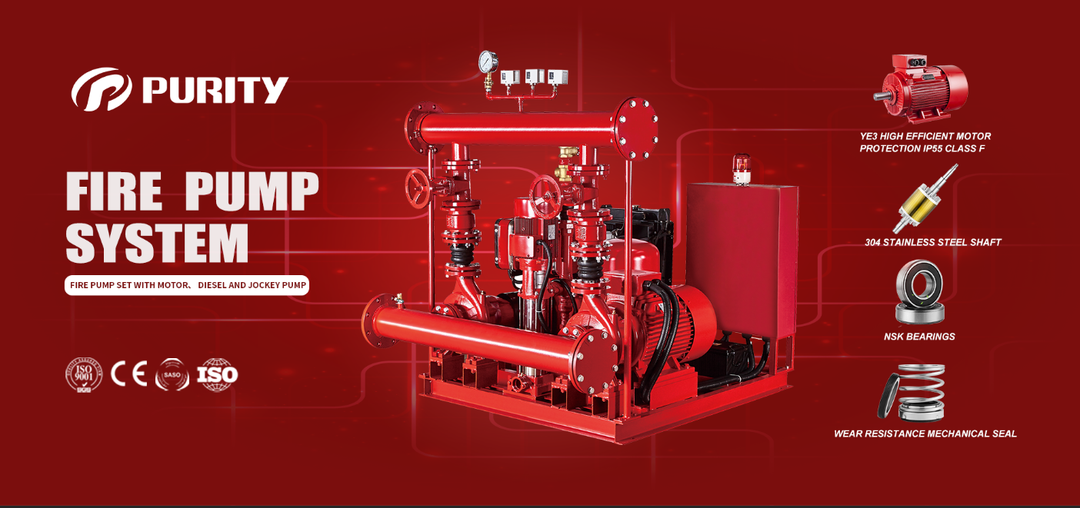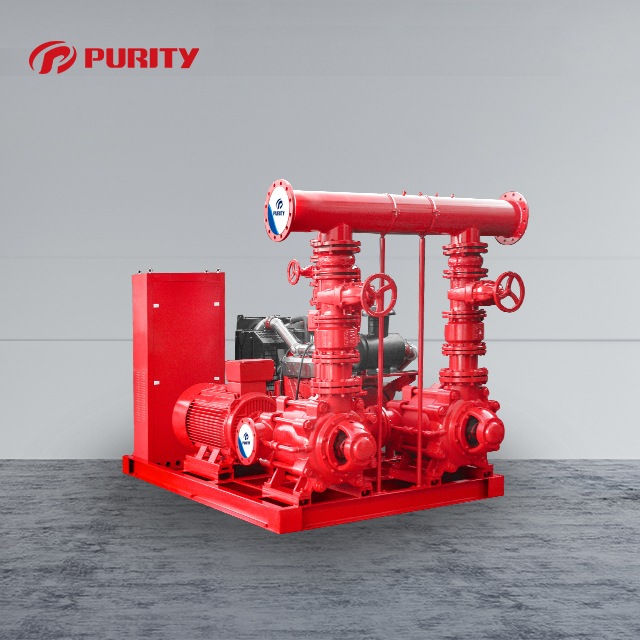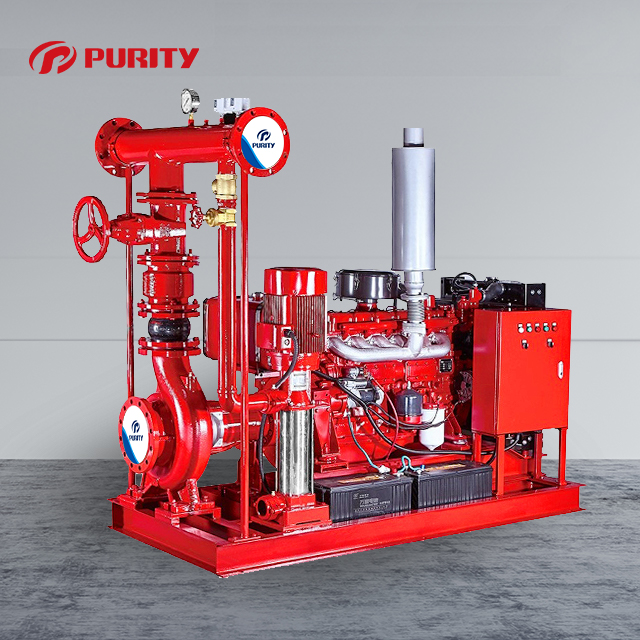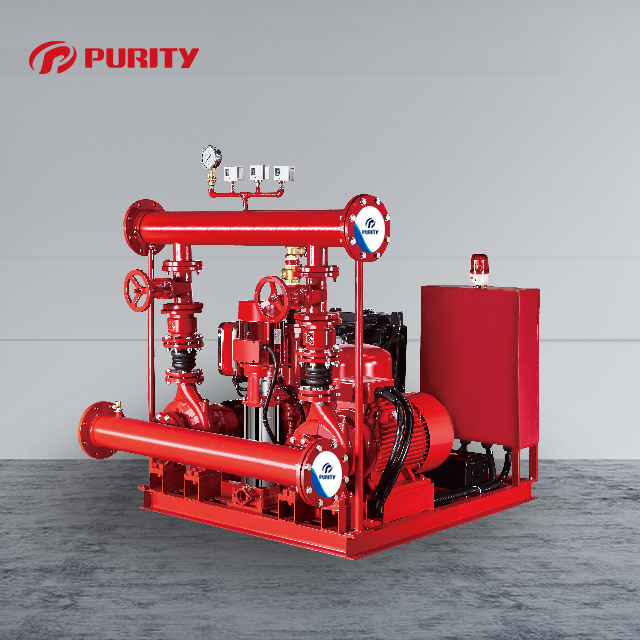A fire pump is an essential piece of equipment designed to supply water at high pressure to extinguish fires, protecting buildings, structures, and people from potential fire hazards. It plays a critical role in firefighting systems, ensuring that water is delivered promptly and efficiently when needed. Fire pumps are particularly useful in situations where the local water supply is insufficient to meet the demand during fire emergencies.
Two common types of fire pumps
1.Centrifugal Pump
Centrifugal pumps work by converting the kinetic energy from an impeller into water pressure. The impeller spins, drawing water in and pushing it outward, creating a high-pressure water stream. This type of pump is favored for its ability to maintain a consistent flow of water, even in varying pressure conditions, making it suitable for large-scale fire suppression systems. Its ability to produce a steady flow ensures that water is delivered with sufficient force to reach high-rise buildings or cover expansive areas.
2.Positive Displacement Pump
On the other hand, positive displacement pumps operate differently. These pumps move liquid by trapping a fixed amount of it and then displacing it through the system. Common types include reciprocating pumps and rotary pumps. The fundamental mechanism involves changes in the volume within a sealed chamber. As the chamber expands, a partial vacuum forms, drawing water in. When the chamber contracts, the water is forced out under pressure. This consistent, metered delivery of water makes positive displacement pumps especially valuable when precise control over the water flow is required, such as in systems that need to maintain specific pressure levels over time.
3.Key Components and Features
Modern fire pumps, such as those used in complex firefighting systems, come equipped with specialized safety features and control mechanisms. These features are designed to enhance both reliability and ease of use in emergency situations.
Pressure Relief Valves: One critical safety feature is the pressure relief valve. In fire emergencies, it helps prevent over-pressurization of the system, which could lead to equipment damage or system failure. By maintaining optimal system pressure, these valves ensure that the fire pump can continuously deliver water without the risk of failure. Control and Monitoring Systems: Fire pumps are often paired with advanced control systems that can automatically start, stop, and monitor the pump’s performance. These systems may include remote control capabilities, allowing operators to manage the pump from a distance.
Figure | Purity Fire Pump-PEDJ
4.The Role of Fire Pumps in Firefighting Systems
A fire pump is just one part of a larger, integrated firefighting system. These systems include sprinklers, hydrants, and other essential components. The correct installation, sizing, and regular maintenance of the fire pump are critical for ensuring that the overall system performs as intended during an emergency. For instance, fire pumps are required to meet specific flow rates and pressure levels based on the building’s size and layout. Adhering to local building codes and fire safety regulations is essential. These standards ensure that fire pumps can deliver adequate water supply during an emergency, maintaining the flow rate necessary to control or extinguish the fire.
5.Importance of Maintenance and Testing
To ensure fire pumps are always in optimal working condition, regular maintenance and testing are essential. These procedures verify the readiness of the pump and ensure that it complies with safety standards. Common maintenance checks include ensuring that seals are intact, valves are functioning correctly, and that there is no leakage in the system. Testing the pump under simulated emergency conditions can also confirm that it will perform reliably when needed most.
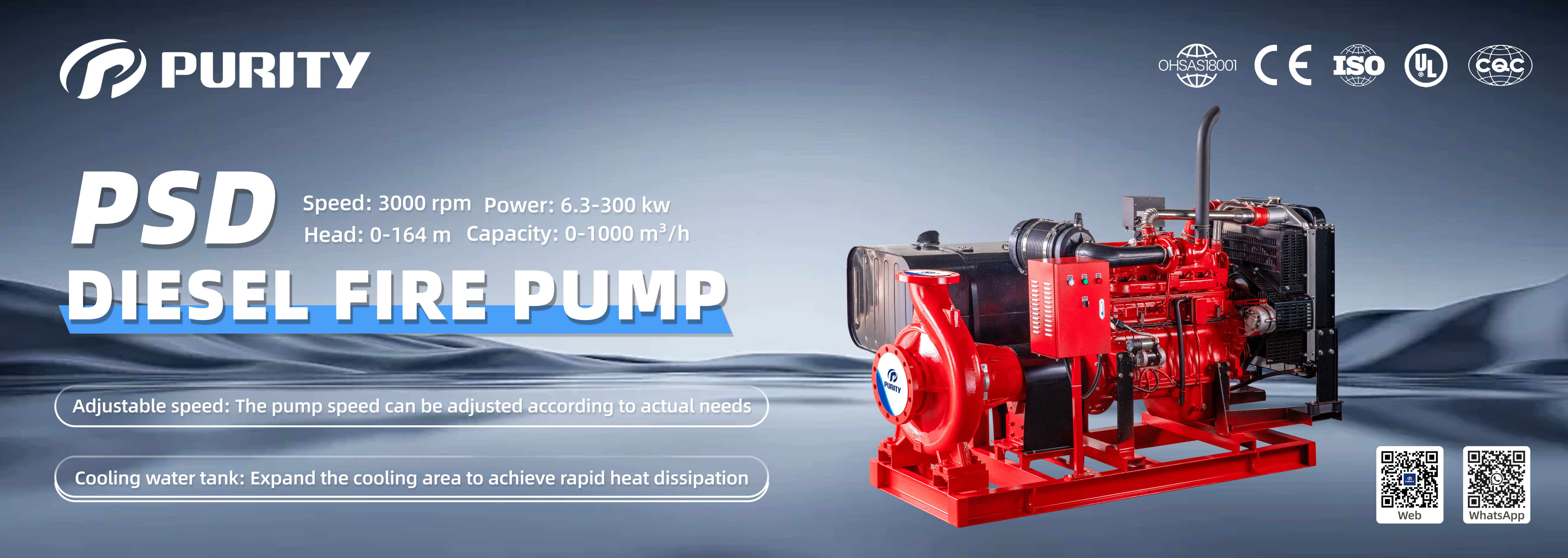
Figure | Purity Fire Pump-PSD
6.Features of Purity Fire Pumps
When it comes to fire pump manufacturers, Purity stands out for several reasons:
(1). Remote Control Support:Purity fire pumps offer remote control capabilities, allowing operators to manage the system from a central location.
(2). Automatic Alarms and Shutdown: The pumps are equipped with automatic alarm systems that trigger during malfunction, coupled with an auto-shutdown feature to prevent damage.
(3). UL Certification: These pumps are UL-certified, meeting international safety standards for fire protection systems.
(4). Power Failure Operation: In the event of a power outage, Purity fire pumps continue to function, ensuring uninterrupted water supply even in extreme conditions.
Conclusion
As an integral part of any firefighting system, fire pumps are crucial for ensuring safety in emergency situations. Whether it’s a centrifugal or positive displacement pump, each type has specific advantages suited to different scenarios. The technological advancements in fire pumps, such as the remote control functions, safety mechanisms, and certifications, further enhance their reliability and performance.
With over 12 years of experience in manufacturing fire pumps, Purity has developed a reputation for providing dependable and innovative solutions. These pumps are designed to meet stringent safety standards and ensure they perform reliably under the most demanding conditions, making them a top choice for anyone looking to enhance their fire safety systems.
Post time: Dec-16-2023

